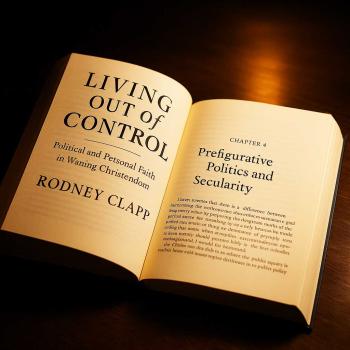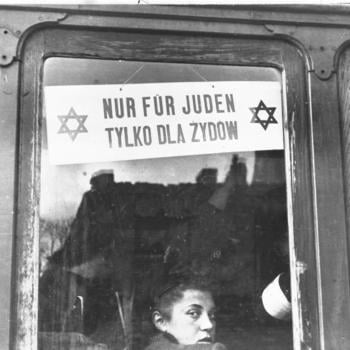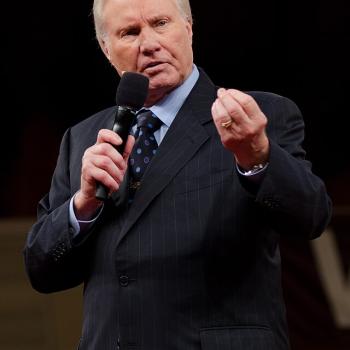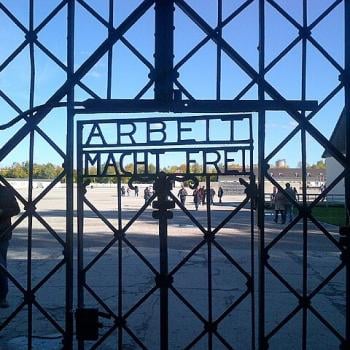A Curse of Living Long: Having Seen It All Before (Thoughts about “Signs and Wonders”)
I’m not really that old, but I’ve seen a lot in my lifetime. And I’ve read a lot. And I’ve watched a lot of television. I’ve met and talked with many different people (I’ve had literally thousands of students) and visited (often as guest speaker) numerous churches. Sometimes I feel like having “Been there; done that” tattooed on my forehead. Sometimes it feels like the “new” in religion is always just something recycled from the past.
Recently I’ve been asked about alleged new Holy Spirit-driven phenomena in some independent, charismatic-type churches. And I’ve read about such in Christian magazines and on the internet. It seems there’s a new wave of 1950s style Pentecostal extremism sweeping many of these churches. I’ll first describe what I’m being told and asked about and then explain why it sounds familiar.
Often the hype includes phrases like “God is doing a new thing!” with an invitation to come to a particular church or revival to experience that. Here are some of the “new things”: gold dust appearing on people’s faces and hands, “glory clouds” appearing in the sanctuary, angels appearing to people and communicating with them, teeth being miraculously filled with gold, “prophets” directing people’s lives, oil dripping from hands and even walls, etc., etc. Now don’t get me wrong; I would never say these things can’t happen. On the other hand, if they happen I don’t necessarily attribute them to the Holy Spirit and I don’t think Christians ought to go chasing them. In fact, I would prefer to stay away from any church that touts them as “signs” of some deeper or higher spirituality.
What I like to tell people who ask me about these “divine visitations,” “signs and wonders,” is that none of it is new. These phenomena were all marks of the Latter Rain Movement of the 1950s. (I’m sure one could find precursors in previous enthusiastic revivals.) I was alive and growing up in a classical Pentecostal church and home in the Upper Midwest in the 1950s when the Latter Rain Movement was strong in Canada and the U.S. It divided Pentecostals—including our church. Every city had at least one new Latter Rain church by the late 1950s and early 1960s. Latter Rain evangelists were holding “protracted meetings” (nightly revivals that went on for weeks) in tents and rented auditoriums. Often when they finally left a town a new Latter Rain Pentecostal church was formed as a result of the meetings.
The Latter Rain Movement was Pentecostalism on steroids. It was not a cohesive movement with a headquarters but a diverse collection of extreme Pentecostals who promoted miracles and prophecy as the sine qua nons of Holy Spirit power manifested in the “end times.” The movement swept across America, mainly among Pentecostals (the charismatic movement was yet to come), with the message that certain evangelists were “Manifest Sons of God”—raised above ordinary humanity into a kind of supernatural existence marked, for example, by ability to be in two places at the same time. Some of them claimed to have been taken up into heaven to engage in direct, face-to-face conversations with Jesus (and sometimes God the Father). They preached that every Spirit-filled Christian has the potential to become a “Manifest Son of God” through the Holy Spirit and their ministries.
A Manifest Son of God evangelist (whether called that or not) was revealed by his (occasionally her) power to pray for the sick with the result that they were supernaturally healed. Of course, that wasn’t new. The “Healing Revivals” of the 19th century laid the foundation for that as did the entire Pentecostal emphasis on divine healing through prayer and the contemporary gift of healing. Classical Pentecostals always prayed for the sick for their physical healing. So did many “Holiness” churches and ministries. The new thing in the Latter Rain Movement was a virtual guarantee that if you came to a certain evangelist’s meetings, donated to his ministry, and allowed yourself to be prayed for by him you would be healed. If you weren’t healed, it was your fault, not his. Also surrounding these evangelists were claims of supernatural visitations by angels. People flocked to their revivals hoping to see an angel or hear angels singing. Also these evangelists frequently claimed that people’s rotten teeth were “healed” during their meetings with gold fillings. Latter Rain churches claimed “glory clouds” filled the upper spaces of their sanctuaries or tents, oil dripped down their walls, and gold dust sparkled on people’s faces and hands as they worshiped.
Over the years I met many Pentecostals touched by the Latter Rain Movement. Our church was divided over it and several leading members gradually left to join new churches founded as a result of Latter Rain evangelists’ tent revivals. Our pastor, like most mainline Pentecostals, urged people to stay away, especially from Latter Rain evangelists who claimed to possess supernatural powers as “Manifest Sons of God.” One such evangelist came to town and, because our pastor would not support his meetings, “prophesied” that he would soon die of cancer—as a punishment from God for criticizing his methods.
Among the Pentecostal evangelists often associated with the Latter Rain Movement were William Branham and A. A. Allen. They had numerous imitators and “would-bes.” Both men became controversial for many reasons and yet gathered large, passionate followings. (A famous picture of Branham framed and hung on admirers’ walls showed him with a halo around his head.)
The mainline Pentecostal denominations shunned the Latter Rain Movement as “extremism”—“wild fire” was a common word for it. The Latter Rain people responded “Better wild fire than no fire at all!” The mainline Pentecostal leaders criticized the Latter Rain Movement for having “cultic” aspects and often wandering off into heresy.
Years after I left Pentecostalism I read a book that opened my eyes about the Latter Rain Movement. That was Robert K. Jewett’s Paul’s Anthropological Terms: A Study of Their Use in Conflict Settings (E. J. Brill in 1971). Jewett, a leading New Testament scholar, convincingly explained the difference between the proto-gnostic troublers of the Corinthian church and the divine men (theioi aner), „super apostles“ in 2 Corinthians. Two different sets of opponents of Paul and his ministry in the same church. The portrait of „divine men“ (a Greek type of shaman common in the Roman Empire at the time Paul wrote his Corinthian letters) strongly reminded me of the „Manifest Sons of God“ of the Latter Rain Movement. Paul did not deny miracles or even that they may perform them, but he based his apostleship not on miracles but on his sufferings for Christ.
I wonder if the Latter Rain Movement is making a come back? It seems possible. I urge people not to „chase miracles“ or seek after signs and wonders. If they happen, fine. But they are not the be-all and end-all of the outpouring of God’s Spirit. That would be exalting Christ and the creation of Christ-like lives.











